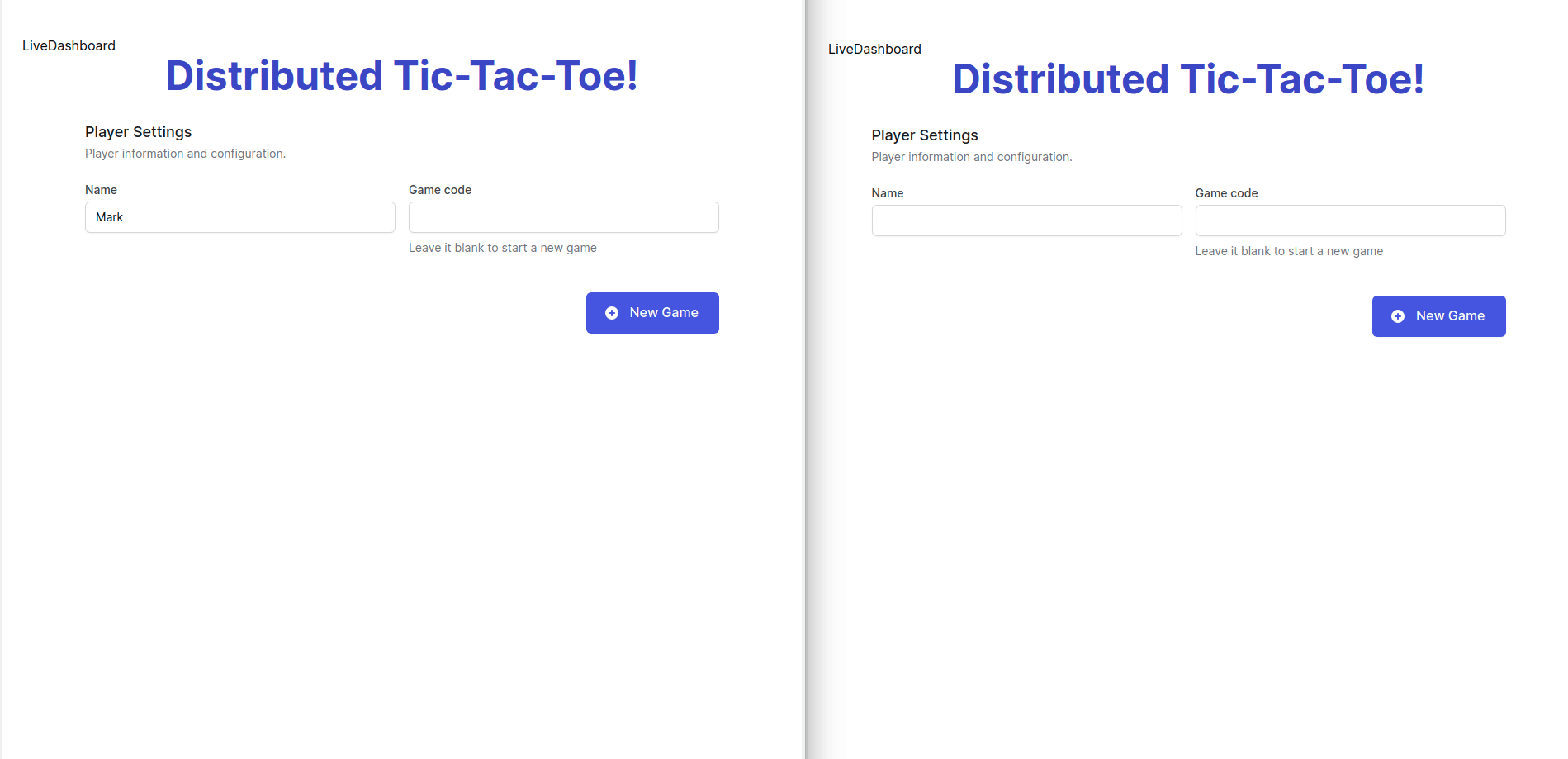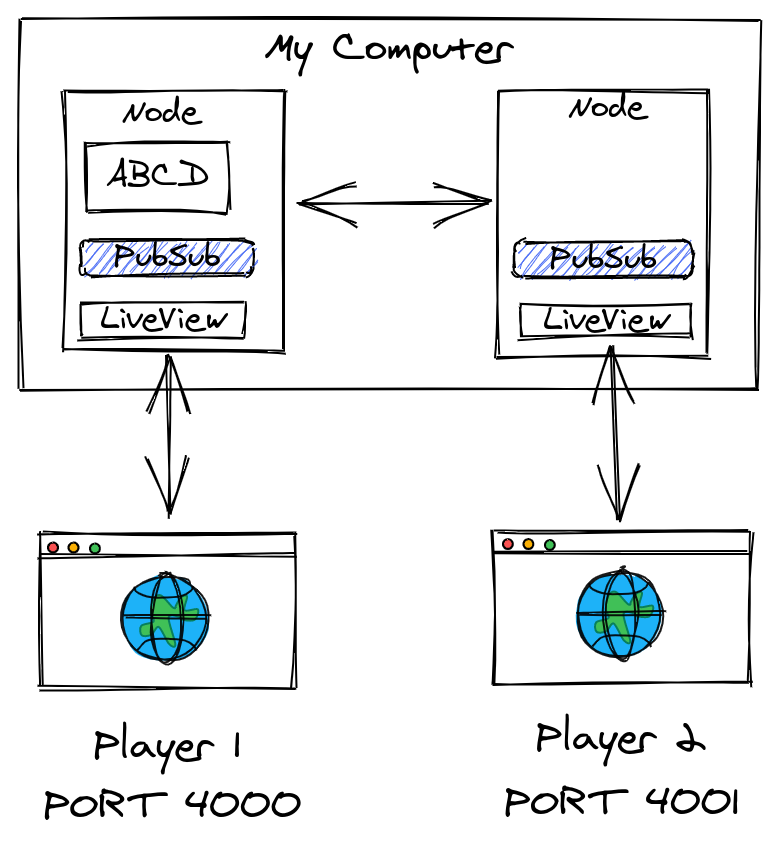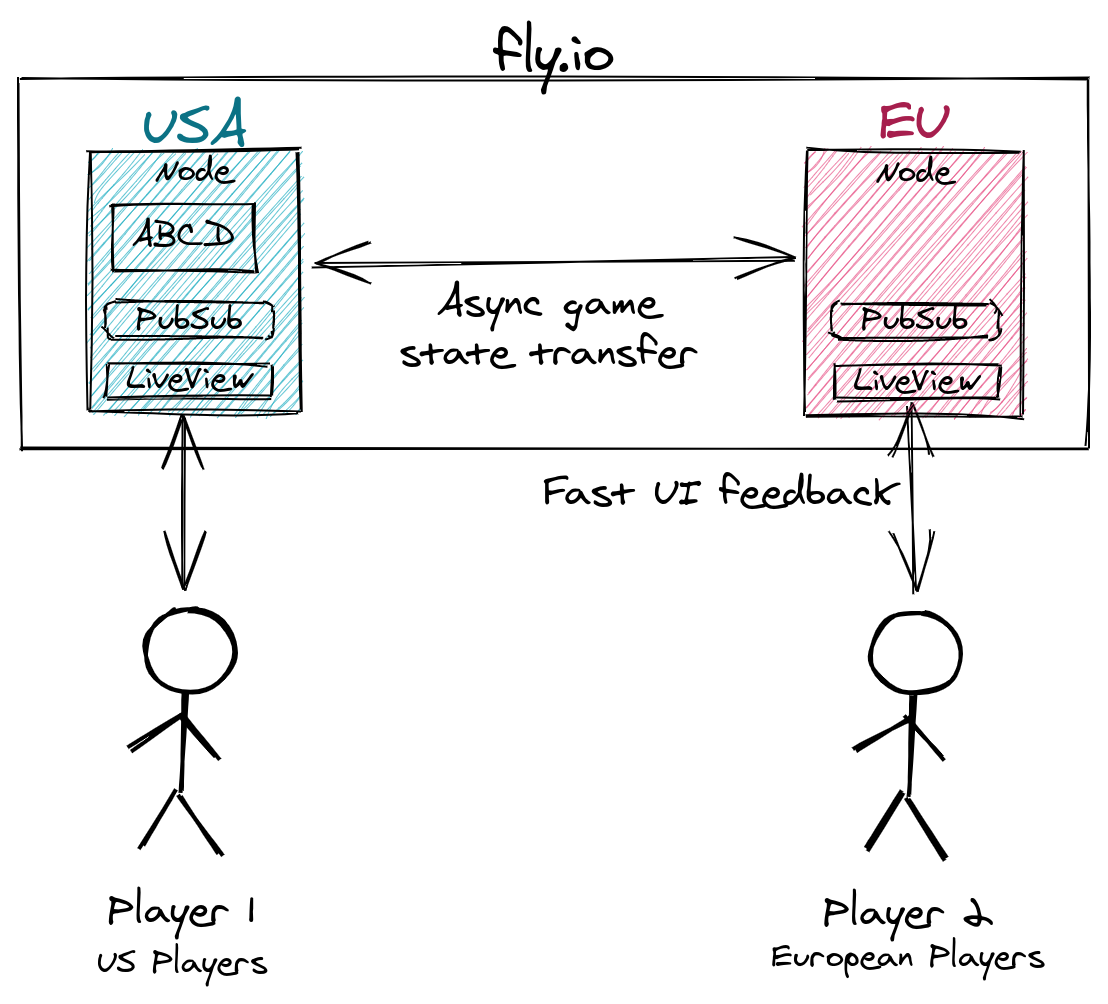This is a demonstration of building a clustered, distributed, multi-player, turn-based game server written in Elixir. As designed, it plays Tic-Tac-Toe, but was designed to be extended to play almost any multi-player turn based game.
This uses Phoenix LiveView for the UI, TailwindCSS for styles, libcluster for clustering the nodes, horde for providing a distributed process registry, and fly.io for hosting and multi-region clustering support.
You can read the blog post about it here: fly.io/blog/building-a-distributed-turn-based-game-system-in-elixir/
To try the project out locally:
- Install dependencies with
mix deps.get - Install Node.js dependencies with
npm installinside theassetsdirectory - Start Phoenix endpoint with
mix phx.server
Now you can visit localhost:4000 from your browser.
Since ths is multi-player, open a second browser window to the same address. localhost:4000
This is what a game looks like:
To run it clustered locally, in a terminal window, run the following command:
PORT=4000 iex --name a@127.0.0.1 --cookie asdf -S mix phx.server
In a separate terminal window, run this command:
PORT=4001 iex --name b@127.0.0.1 --cookie asdf -S mix phx.server
Now in one browser window, visit localhost:4000.
From another browser window, visit localhost:4001.
You created two clients that are connected to two separate Elixir nodes which are clustered together! This is what it looks like where "ABCD" is a started game.
Deploy this to your own Fly.io account and see it in action for yourself!
- Setup your Fly.io account
- Clone this repo
- Register your app on Fly.io
fly launch --name my-special-custom-name
- Take all the defaults. As for the region, choose
sea(Seattle, Washington (US)) - Replace the generated
fly.tomlfile with the following config but keep theappname that you chose for your app.
app = "<my-special-custom-name>"
kill_signal = "SIGTERM"
kill_timeout = 5
[[services]]
internal_port = 4000
protocol = "tcp"
[services.concurrency]
hard_limit = 25
soft_limit = 20
[[services.ports]]
handlers = ["http"]
port = 80
[[services.ports]]
handlers = ["tls", "http"]
port = 443
[[services.tcp_checks]]
grace_period = "30s" # allow some time for startup
interval = "15s"
restart_limit = 6
timeout = "2s"- Setup your Phoenix secrets
$ mix phx.gen.secret
gZNW554LeBx4VGuG2U+X3fe7OCmk28g3OIE0Ia+OFRxS7+bhEm/2ZnIvnGTRo4DO
$ fly secrets set SECRET_KEY_BASE=gZNW554LeBx4VGuG2U+X3fe7OCmk28g3OIE0Ia+OFRxS7+bhEm/2ZnIvnGTRo4DO
Secrets are staged for the first deployment
- Deploy!
fly deploy
- Open it in the browser
fly open
At this point you have a working system. This is where most systems stop!
Ready to take it to multiple regions? We've got one in Seattle on the West Coast, let's add one on the East Coast to cover the whole US.
- Add a region
ewr(Parsippany, NJ (US))
fly regions add ewr
- Scale it up
fly scale count 2
- Check the Status - Re-run this command to see it balance out
fly status
- Check out the logs
fly logs
2021-03-31T14:28:22.880Z c9b72c04 sea [info] [info] [libcluster:fly6pn] connected to :"tictac@fdaa:0:1da8:a7b:ab3:1c48:eb59:2"
2021-03-31T14:28:22.881Z c9b72c04 sea [info] [info] Starting Horde.RegistryImpl with name Tictac.GameRegistry
2021-03-31T14:28:22.884Z c9b72c04 sea [info] [info] Starting Horde.DynamicSupervisorImpl with name Tictac.DistributedSupervisor
2021-03-31T14:28:22.890Z c9b72c04 sea [info] [info] Running TictacWeb.Endpoint with cowboy 2.8.0 at :::4000 (http)
2021-03-31T14:28:22.892Z c9b72c04 sea [info] [info] Access TictacWeb.Endpoint at https://tictac.fly.dev
The first log line shows the nodes are connected.
You now have a clustered Elixir application where users connect to the nearest server for them. This can provide a better user experience!
Tic-Tac-Toe is a simple game. This architecture could support any multi-player turn-based game you might think of. What cool game do you want to make?
I used Livebook notebooks to document the app logic in a regular Phoenix Web application! I created two notebooks to document how the game state works and also how a game server runs that state.
They are just plain markdown files as far as the project is concerned. Open them with Livebook and follow this guide to execute them in the context of the application.
You will find them in the notebook folder.


